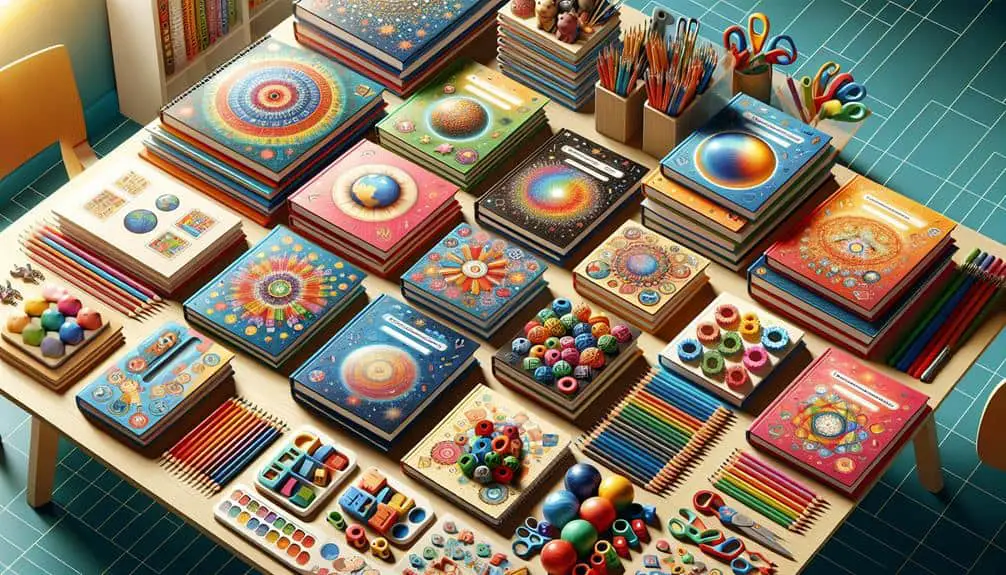Creating lesson plans for homeschooling special needs children involves personalized adaptations to cater to their unique needs. Understand their challenges and strengths, making necessary accommodations for engagement. Address sensory preferences to create a comfortable learning space. Observe and adjust based on their responses to stimuli. Small changes like noise-canceling headphones can aid focus. Tailor the curriculum to their abilities, integrating interests and adjusting instructions to their learning style. Incorporate multi-sensory methods and utilize assistive technology. Regularly evaluate progress, stay flexible, and be open to adjustments for effective support. More insights await for optimizing your teaching approach.
Key Points
- Personalize lessons to match the child's abilities and interests.
- Incorporate multi-sensory activities for interactive learning experiences.
- Utilize assistive technology to cater to unique learning needs.
- Monitor progress regularly to adjust lesson plans effectively.
- Adapt curriculum based on individual strengths and weaknesses.
Understanding Special Needs in Homeschooling
If you're homeschooling a child with special needs, understanding their unique challenges and strengths is essential for creating effective lesson plans. Understanding accommodations and modifications is vital to guarantee your child can fully engage with the material. By addressing sensory needs and preferences, you can create a learning environment that's comfortable and conducive to their learning.
Take the time to observe how your child responds to different stimuli and adjust the learning environment accordingly. Some children may be sensitive to bright lights or loud noises, while others may seek out tactile experiences for sensory input. By making small changes like using noise-canceling headphones or providing fidget toys, you can help your child stay focused and engaged during lessons.
Adapting Curriculum for Individual Abilities
To guarantee your child's learning journey, customize the curriculum to match their unique abilities and strengths. Recognizing that each child has distinct needs is crucial for establishing an efficient learning environment. Here's how you can adjust the curriculum for individual abilities:
- Personalized approaches: Recognize your child's strengths and weaknesses to develop a tailored learning plan that addresses their specific needs. This might involve modifying the pace of learning or adjusting the way information is presented.
- Customized learning: Integrate your child's interests into the curriculum to make learning more captivating and meaningful for them. This individualized approach can boost their motivation and overall comprehension of the material.
- Adapted instructions: Adjust the way instructions are provided based on your child's learning style. Some children may benefit from visual aids, while others may prefer hands-on activities. Tailoring the instructions to suit their preferences can optimize their learning experience.
Incorporating Multi-Sensory Learning Methods
Let's explore how incorporating multi-sensory learning methods can enhance your child's educational experience. By incorporating hands-on activities and creative approaches into your homeschooling lesson plans, you can cater to your special needs child's unique learning style. Multi-sensory learning methods engage multiple senses, making learning more interactive and effective. For example, using manipulatives like blocks or beads can help enhance your child's understanding of math concepts. Additionally, incorporating art activities can stimulate creativity and improve fine motor skills.
When you include multi-sensory elements in your lessons, you provide opportunities for your child to learn in ways that suit them best. For a child with special needs, this approach can make learning more engaging and enjoyable. Whether it's through touch, sight, sound, or movement, multi-sensory learning methods can help your child grasp complex concepts more effectively. Embrace the opportunity to tailor your lesson plans with these approaches to create a rich and fulfilling educational experience for your special needs child.
Utilizing Assistive Technology in Lessons
Incorporate assistive technology seamlessly into your lessons to enhance your child's learning experience. Technology integration is key in catering to your child's unique needs.
Here are three ways to effectively utilize assistive technology in your homeschooling lessons:
- Personalized Learning Apps: Explore educational apps designed for personalized learning. These apps adapt to your child's progress, providing targeted support in areas where they may need extra help.
- Text-to-Speech Software: Implement text-to-speech software to assist children with reading challenges. This technology can read aloud text from books or worksheets, making learning more accessible and engaging.
- Interactive Whiteboards: Utilize interactive whiteboards to create dynamic and visual lessons. These boards can accommodate various learning styles, allowing your child to interact with lesson content in a hands-on way.
Evaluating Progress and Making Adjustments
Assess your child's progress regularly to tailor lessons effectively to their evolving needs and abilities. Progress monitoring is key to understanding how well your child is responding to the current lesson plans. Keep track of achievements, challenges, and any changes in behavior or learning patterns. By doing so, you can identify areas where your child may need additional support or modifications to the curriculum.
Intervention strategies play an important role in adjusting lesson plans for special needs children. If you notice that your child is struggling with a particular concept, you may need to adapt your teaching methods or materials to better suit their learning style. Flexibility and being open to making adjustments as needed are vital to adjusting your child's progress.



